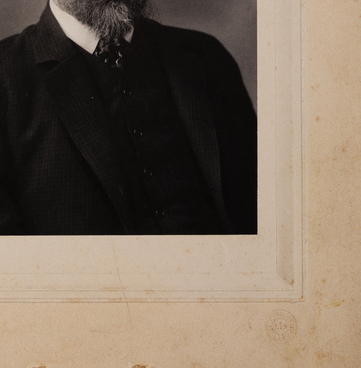Natalya Alexandrovna Duddington (née Ertel) was the eldest daughter of the writer Alexander Ivanovich Ertel from his marriage to Mariya Vasilyevna Ogarkova. She was born on November 14, 1886, in Tver, back when her father served administrative exile there.
Natalya Alexandrovna studied first at the Alfyorova Moscow Women’s Gymnasium and then the Stoyunina Gymnasium in Saint Petersburg, where in the eighth grade she attended the propaedeutic course of philosophy, led by Nikolay Lossky.
Natalya Ertel developed an interest in philosophy and intended to continue her education at the Higher Courses for Women in the class of Lossky, where she applied in 1905, but educational institutes were temporarily closed because of the first Russian Revolution.
In the summer of 1906, Natalya went to London on vacation and entered the University of London in the fall. The Ertel family was fascinated by everything English: the girls studied English from their early years, and the writer’s library mostly consisted of English books. Constance Garnett, a famous English translator of Russian classical literature, was a family friend: in 1904, she and her son stayed with the Ertels in the village of Alexandrovka, Tambov Governorate.
In a letter to the Voronezh local historian Oleg Lasunsky dated June 13–14, 1968, Natalya Duddington wrote, “When I entered the University of London in the fall of 1906, the Garnetts treated me very kindly, and over the years I completely ‘grew into’ their family. Mrs. Garnett had very poor eyesight — at some point, she was only allowed to read one hour a day at most — so I read aloud to her in Russian, she translated that into English, and I wrote down her translation, and in this intricate way she translated all of Dostoyevsky, Chekhov, Gogol, and many more. She needed a lot of patience for this work, but for me it was a great school of translation.”
In 1911, Natalya Ertel graduated from the university with a master’s degree in philosophy and married Pastor John Duddington in 1912, who later gave up church and became a curator of art galleries in Whitechapel. They had two children — a daughter Anna and a son Alexander.
Natalya Duddington lived in London and translated classics of Russian fiction into English. She translated “The Captain’s Daughter” and “The Queen of Spades” by Alexander Pushkin, “The Golovlyov Family” by Mikhail Saltykov-Shchedrin, “Smoke” by Ivan Turgenev, “Russian Fairy Tales” by Alexander Afanasyev, her father’s story “A Greedy Peasant”, as well as philosophical works by Dmitry Merezhkovsky, Vladimir Solovyov, Nikolay Berdyayev, and her teacher Nikolay Lossky.



